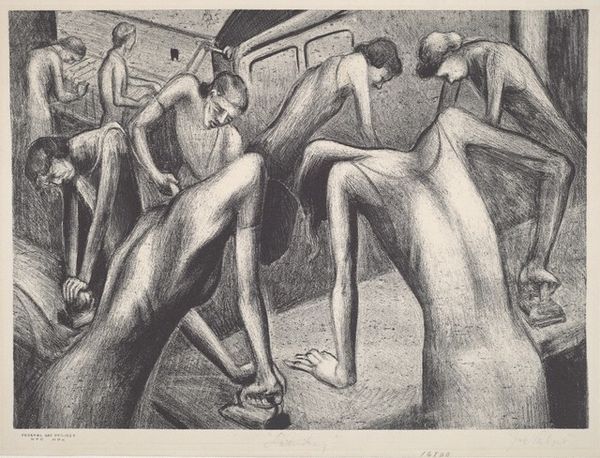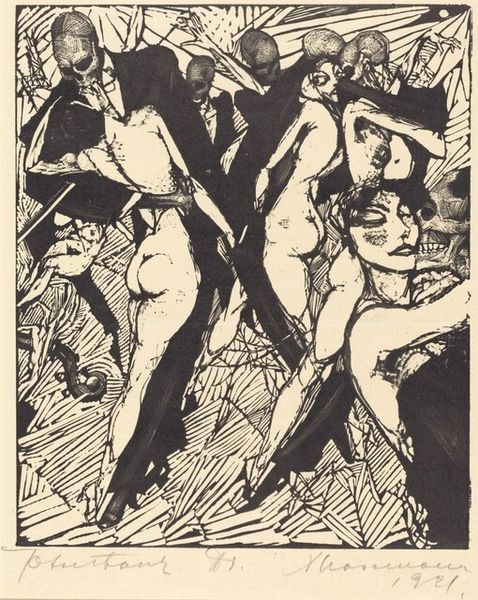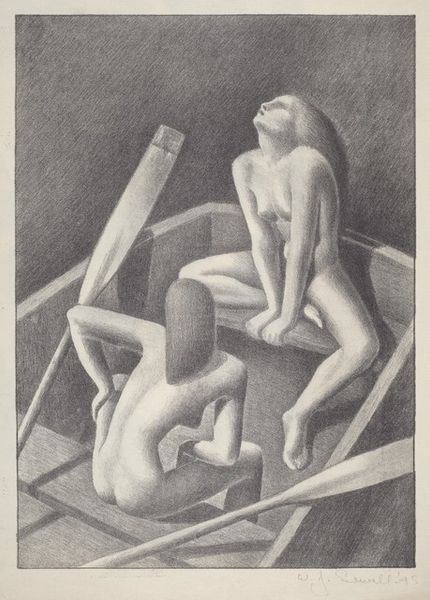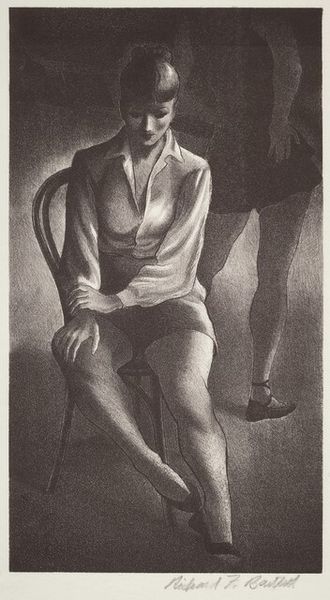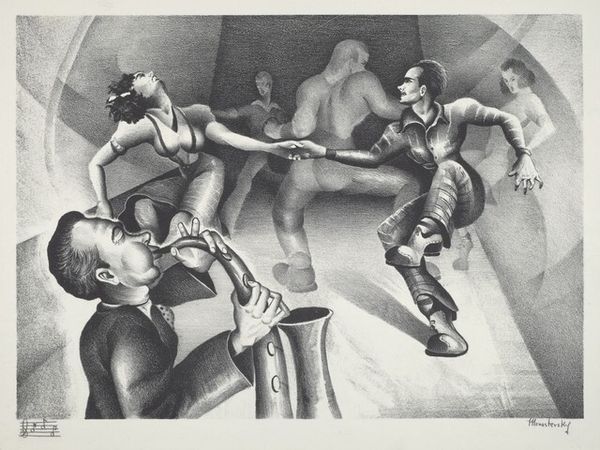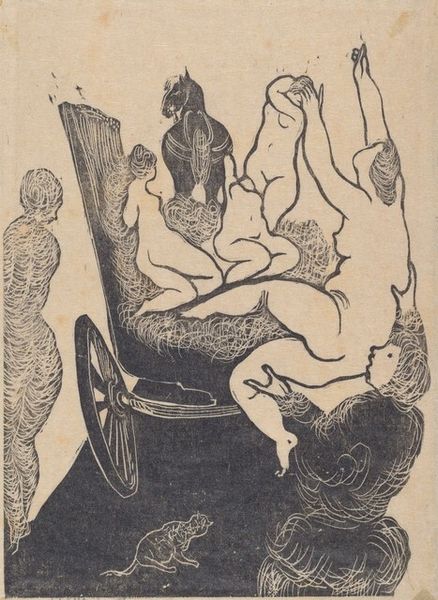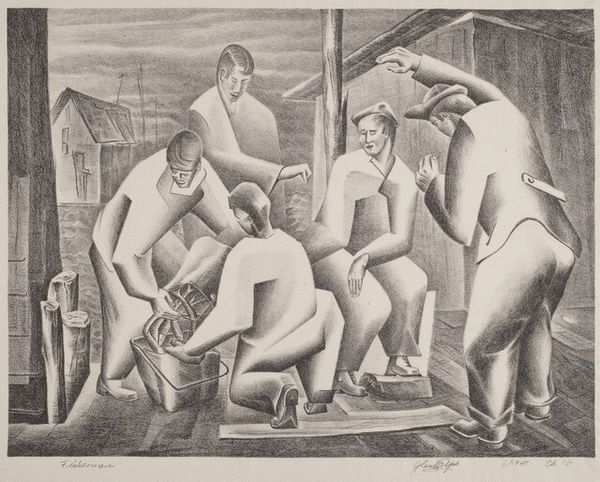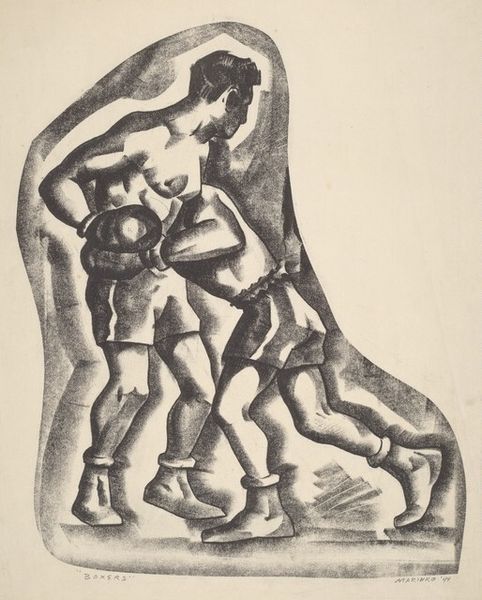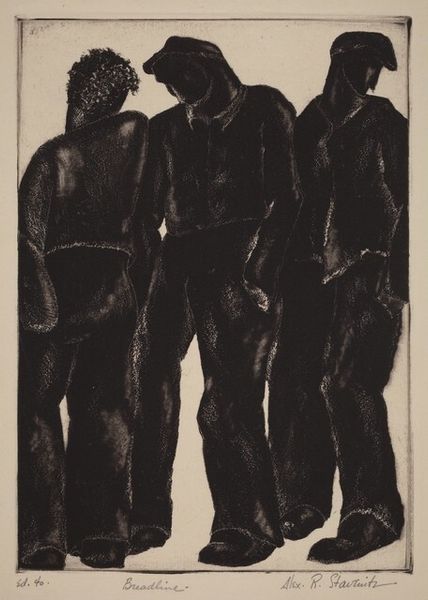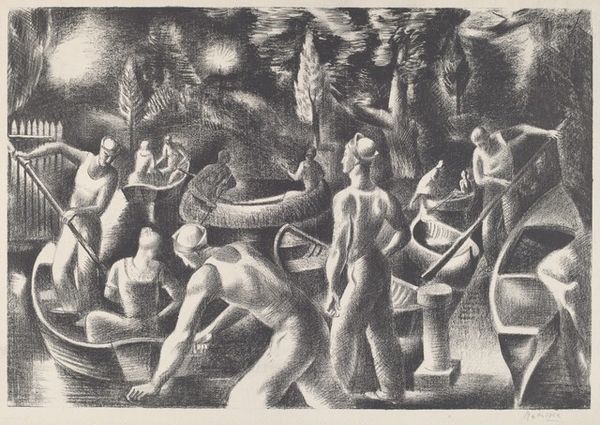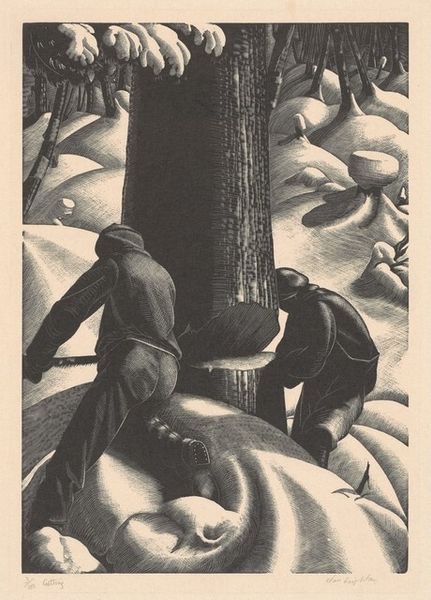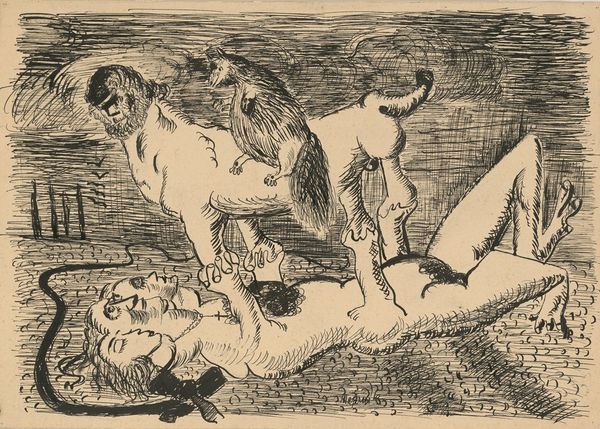
drawing, print
#
drawing
# print
#
figuration
#
social-realism
#
modernism
#
realism
Dimensions: stone: 497 x 393 mm image: 391 x 301 mm sheet: 522 x 403 mm
Copyright: National Gallery of Art: CC0 1.0
Curator: This drawing, titled "After Walt Whitman," was created in 1940 by Hannah S. Rile. The print depicts figures in motion—what catches your eye about it? Editor: There's an immediate sense of labor, and of striving. They appear to be excavating, maybe even building, though there's a solemn feeling too, a heaviness suggested by the shading. Curator: Yes, those figures—faceless, almost monolithic—embody a sort of collective effort. Their nudity could symbolize vulnerability, or perhaps a return to primal human activity. Walt Whitman’s poetry often celebrated the working class and the beauty of the human form; do you see that echoed here? Editor: Definitely. The connection to Whitman also gives a vital, patriotic reading. These are Americans working the land, or at least that is how the historical context speaks to me. It’s from the Social Realist movement, so, while evocative and humanistic, I always consider the ideology imbued into it and who it serves. Curator: It is interesting that Rile made these figures intentionally anonymous. Their gestures and muscular physiques recall classical sculptures but set within a modern, industrial task. I keep thinking about how monuments operate to shape national and cultural memory, especially considering this was done during a key point in American History. Editor: Good point, the anonymity also emphasizes their role as symbolic representatives, like cogs within a greater machine. This allows it to take on multiple meanings: backbreaking labor, or rebuilding, but also faceless oppression, perhaps foreshadowing impending wartime conflict, perhaps reflecting the depression era anxieties. The graveyard imagery of shattered planks hints at an end, of work finished, which may add to that air of desolation. Curator: It definitely sits between the romantic vision of Social Realism, and a darker premonition about its promises. The repetition of forms and lines builds on Whitman's style in many ways, the themes and cadences. Editor: I agree, Rile's artwork, seen through a contemporary lens, can be understood beyond pure tribute—more like a profound engagement. Curator: And for me, "After Walt Whitman" acts as a reminder of the enduring human themes: striving, building, reflecting, but above all of the inherent paradoxes within progress itself.
Comments
No comments
Be the first to comment and join the conversation on the ultimate creative platform.
